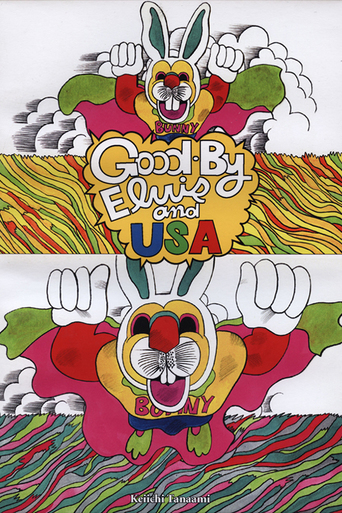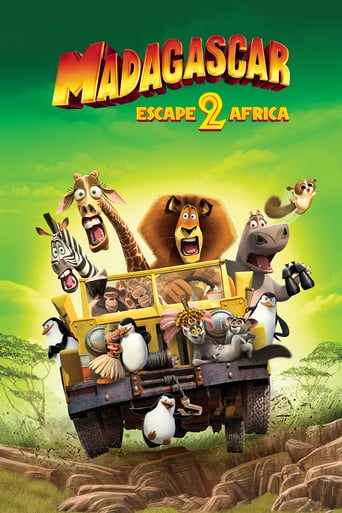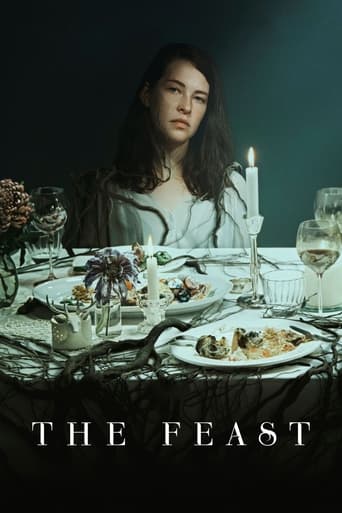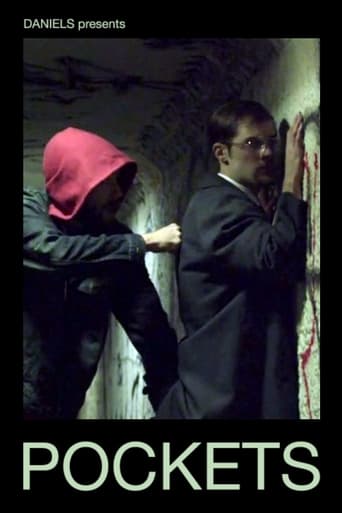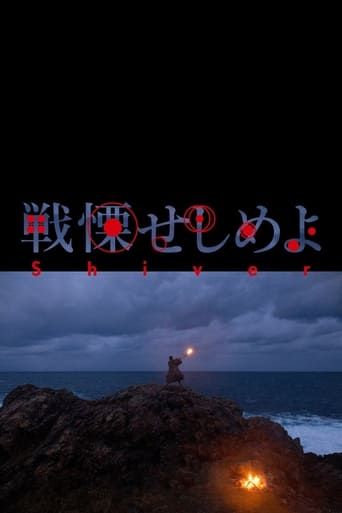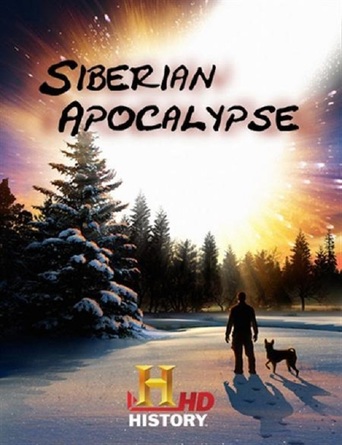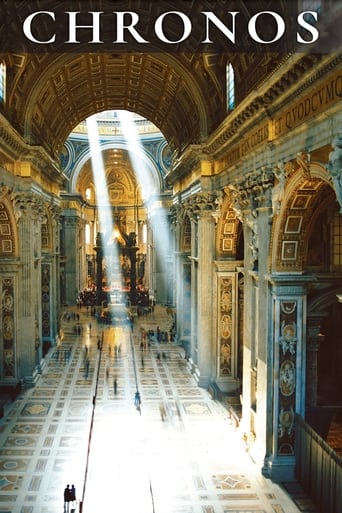
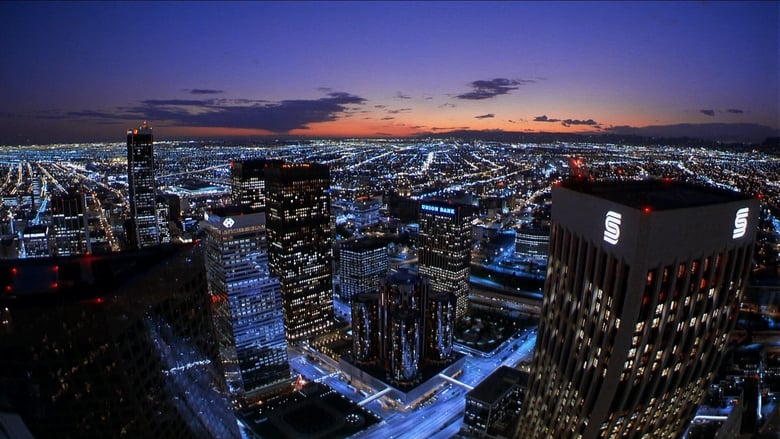
Chronos (1985)
Carefully picked scenes of nature and civilization are viewed at high speed using time-lapse cinematography in an effort to demonstrate the history of various regions.
Watch Trailer
Cast
Similar titles
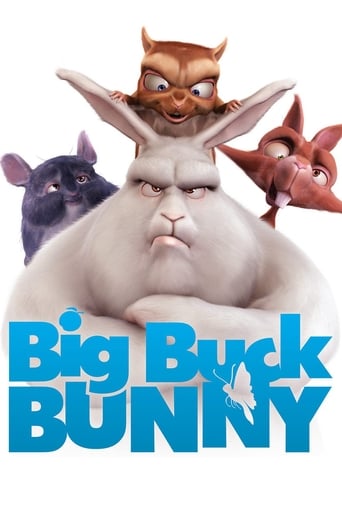
Reviews
This movie is the proof that the world is becoming a sick and dumb place
Save your money for something good and enjoyable
The film makes a home in your brain and the only cure is to see it again.
The film's masterful storytelling did its job. The message was clear. No need to overdo.
There is really not too much to review here. This is a 42-minute documentary by director Ron Fricke which was written by the Constantine sisters(?). The topic is basically history vs. progress. We see many very old monuments, but we also see lots of current stuff, like modern streets or skyscrapers. I have to say, I personally preferred the old parts. The music is also pretty good in here. but, as harsh as this may sound, a documentary without any kinds of dialogue and just photography recordings can never make it to my favorite list, I am afraid. This one here is certainly as good as it gets for the genre, but I was never amazed really. Still, it's not a bad piece of filmmaking at all. And all the use of time lapse was fairly interesting. It's also the type of film which is probably much more effective on the big screen. I give Fricke a thumbs up here without praising it too much. Still it's probably among the better documentary movies from 30 years ago. And finally, I want to say that this looks pretty modern, actually I would have guessed this is from the 21st century if I hadn't known the truth before.
This is somewhere between documentary and photography. It has neither a script nor actors, and there is no narrator, no interview, and no still images. This is a moving picture, in the purest sense. The major focus is the time lapse cinematography of Ron Fricke, who also serves as director. That, and the soundtrack by Michael Stearns, is the sum total of "Chronos".There are deeper meanings to some, intended and accidental, but I won't cheapen things by speculating on what those are. The main drive is the battle of slow versus fast, city versus nature. Much of the time lapse goes by at what appears to be the same speed, but what moves blisteringly fast in the city seems to go by without change or notice in nature. Only the slow march of shadows is apparent across rocks and old ruins. These passages are full and heavy with the weight of time. They pull like the moon on the tides, dragging you back into long forgotten history. It comes like a slow, shallow breath between trains hurtling down tracks to uncertain destinations, and the bleeding blur of strangers up escalators.I've watched "Chronos" in many different contexts. It's been a relaxing background to the end of a long, tired day, or the full focus of my attention as I appreciate its depth of artistry. At forty-three minutes, it's neither too long to drag or too short to feel cut off. Each time after watching it, I find myself out of place with the speed of things around me. I feel the need to step back and breathe, to run faster, to walk slower. Somehow, some way, "Chronos" changed the way I see time.
Ron Fricke's directorial debut, is a mixed bag. While visually stunning and musically haughty, this is nothing new for this type of genre. The genre being the silent-mentary (a film with no dialog that evokes a story or meaning using only images, still and moving, and sounds).One might remember Ron from his work on Koyaanisqatsi. He was the cinematographer on that movie (also had some writing credits). If one looks closely, you will find similarities in the looks of both movies. There is a repetition of the Grand Canyon fly over and one cityscape scene (done from mostly ground level, where there is a metal sculpture in front of a lit office building at night, with two lit buildings on each side, looking upwards). While there are similarities, there are also major differences between the two.The differences come from the directors. Koyaanisqatsi (and the other two movies in the trilogy : Powaqqatsi and Naqoyqatsi) flowed from the creative collaboration of Godfrey Reggio and Philip Glass. They imbued their movie with meaning, by combining images and music. The two elements intertwining to the point where you could not separate them. Whatever the "meaning" was left up to the viewer. They could range from "deep rooted messages" to "there was no message at all".Unfortunately, Ron's directorial debut isn't as good. He definitely does not have a Philip Glass to work with and it shows. One of the weaker elements is the music. The score is symphonic and works well generally, but is very generic sounding. There is very little about it that makes one stir (unless you got a cold draft coming in through the window and someone happens to scratch a blackboard at the same time). The visuals suffer as well. There seems to be little connection between the various places we are shown. Is there a reason we are shown this place or that place in particular ? Hard to tell. It feels more like a guided bus tour, than anything with substance behind it. Ron also seems to overdo the time lapse portions. He uses it in almost every scene. He also seems to have a fascination with the phases of the sun and the movement of sunlight during the course of a day.Don't misinterpret my critique as dislike. On the contrary, the movie has its merits and its moments. My favorite being the rise of the moon over a city at night, with the fly over and drive through ensuing at blazing fast speeds. I would have probably been better served if I had seen this movie before Reggio's trilogy. It is not as good, but its short length and beautiful imagery is definitely worth a look.
`Chronos' is a documentary about time. Ron Fricke attempts to give us a different perspective on time by the use of time-lapse and slow-motion film, hence the passage of time and in particular, the consequent impact on earth, our geography, our nature, our culture. We're shown stunningly beautiful time-lapse footage of impressive deserts, stones full of character, steep mountains, restless cities, people hurrying like ants in all sorts of public and individual transportation, timeless Greek architecture, public places of well-known cities in the western world, Mont St. Michel in the Bretagne at low tide, being engulfed with water during the rise to high tide, the old Bazaar in Istanbul flocking with byers and sellers, the Pyramids of Cheops, the Akropolis in Athens, Istanbul's Hagya Sophia, contrasted by baroque churches. It's stunningly beautiful, but where, oh where is the story behind this? It's also difficult to understand how how the visual information relates to the 1980s Jean Michel Jarre style synthesizer music. Once every while there is a crescendo, the pitch of the music rises, the volume rises, oh my gosh, what is about to happen? Nothing. We are lead into these expectations several times of the documentary, and after the third disappointing crescendo the level suspense and anticipation drops to zero. I can't recommend this movie, however check out Baraka, also by Ron Fricke, where he got everything right that is wrong in Chronos.
